Superfoods Blog
The Superfoods Blog lists our recent page updates, recipes and DIY's.
Goldenseal Root Benefits

Goldenseal root benefits have been a long-time favorite in traditional folk herbalism for many decades if not centuries. Although goldenseal (Hydrastis canadensis) is native to both the U.S. and Canada, wild sources once grew prolifically in the Ohio River Valley, part of the northeastern United States. Historically, it has been utilized by many indigenous North American populations and early settlers in these habitats. But, because of over-harvesting, today's commercial goldenseal plants are now cultivated. Distinguished by its brightly pigmented golden-yellow roots, this underground rootstock is considered the most medicinally potent part of the plant.
Benefits of Eating Kiwi
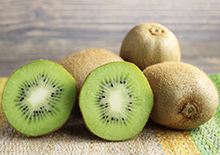
One of the most popular trending benefits of eating kiwi as of late is in regard to its special enzyme known as ACTINIDIN. Spelled similar to its genus Actinidia, and kiwi species Actinidia chinensis, actinidin is a kind of cysteine protease, the enzymes that break down protein in foods. Similar types of protease enzymes are found in other fruits, like the papain from papaya and bromelain from pineapple. Also referred to as actinidain, actinidin is unique to the kiwifruit and first discovered way back in the late 50s for its ability to liquefy gelatin.
Types of Drinking Water

The importance of drinking enough water in your daily routine cannot be overemphasized. It is something each of us needs to ingest every single day for optimal health and well-being. Today, many are realizing water quality does matter and not all sources are created equal. Here we give a quick overview of the most popular types of drinking water, including our very favorite variety as well as why straight-up tap water is not something we recommend as a main source.
Black Pepper Vs White Pepper
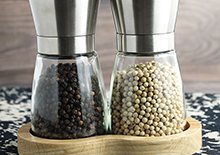
When comparing black pepper vs white there are some major differences, however the species source is not one of them. Both white pepper and black come from the vine-growing pepper plant known as Piper nigrum. Each of these types are also considered fruits or commonly called berries, although they contain little flesh or sweetness. Pepper is one of the most commonly used staple spice seasonings utilized worldwide in many home kitchens. Yet, do you know the differences between the two main varieties? When you look at both white and black pepper side by side you might think that black is actually made from fully ripe berries. It is not. Fresh black peppercorns are harvested when the fruit is unripe and still green.
Secret Uses of Ginkgo

These four secret uses of Ginkgo biloba go a bit beyond the scope of ginkgo's most popular benefits. If you're not familiar with this commonly utilized ornamental and medicinal tree, it is one of the oldest plant species on the planet with fossilized leaves dating back over 250 million years ago. The prepared leaves of this amazing tree are likewise a worldwide herbal superstar in the realm of natural brain boosting supplements, most well-known for their nootropic actions on cognition and memory. Here we will discuss other lesser-known uses of Ginkgo biloba regarding issues that often arise during the human aging process.
Non-Fortified Nutritional Yeast

Non-fortified nutritional yeast is finally starting to make its mark in the vegan plant-based world. We've been long awaiting the day when this option would replace its neon-colored counterpart, the version that most are familiar with. These powdered flakes have been utilized for many decades by health seekers as a versatile staple condiment known for its cheesy, nutty umami flavor. An especially popular topping sprinkled on popcorn, pasta and salads, it's likewise prepared to make vegan cheese, sauces, dips and to thicken dressings and soups.
Pearl Powder Supplement

The idea of a pearl powder supplement might sound a bit odd to a Westerner, but pearls have actually been utilized for thousands of years in the Orient for their nourishing nutraceutical attributes. Supplements for internal use, however, are processed a bit differently from those used to make jewelry. These types can come from saltwater pearls but are more frequently sourced from less expensive freshwater pearls and mussel species like Hyriopsis cumingii. The pearls are finely ground, "hydrolyzed" or "levigated" and micronized into very small particles.
8 Things About Arugula Greens

Arugula (Eruca sativa) is a type of leafy green indigenous to Mediterranean climates. Various regions of Italy and the Middle East have been consuming it for many centuries. Also called "rocket" or "rocket lettuce", arugula is most well-known for its distinct nutty peppery flavor that provides a popular addition to most any salad. In the past, larger leaved arugula was sold by the bunch next to kale, cilantro, parsley and collard, but today (at least here in the U.S.) it is frequently found as a type of "baby green" or "microgreen".
Lower Cholesterol Naturally

Can you lower cholesterol naturally? Changing lifestyle habits like diet can definitely help according to many holistic practitioners. Here are ten dietary allies for a cholesterol-reducing protocol: 1) Red yeast rice, a type of koji, is a fermented red-colored rice grain that's inoculated with the mold Monascus purpureus. This species is known for its naturally occurring lovastatins and analogs monacolin K, monacolin L, and monacolin J, elements that have strong cholesterol-lowering influences. The same mold Monascus purpureus is also utilized to extract MONACOLIN K the principal ingredient in prescribed lovastatin medications used to remedy high blood cholesterol.
Top #1 Benefit of Skullcap Herb

Skullcap also goes by the names Blue Skullcap (for its purple/blue-colored flowers), Mad Dog Skullcap (a supposed rabies folk remedy) and Virginian Skullcap (Virginia state being one of its original habitats). Some of the main flavonoids in skullcap are extracted from the leaves and stems using hot water or an alcohol menstruum. We will discuss how to make a skullcap tincture, but first, let's dive into the #1 top benefit of skullcap and reasons to include this botanical ally in your home apothecary.
Supplement Gummies Pros and Cons

On this page, we wanted to address the latest "gummy craze" in the health supplement market, especially over the last couple of years. Many brands we notice today seem to be jumping on the gummy bandwagon, offering this new alternative to capsules, tablets, powders, or liquids. Many herbal, vitamin and superfood supplement producers began promoting them as a more palatable substitute for the hard-to-swallow pill. Some of them even look like a gummy bear. Here we will cover our research and review on the pros and cons of gummies and whether they're as effective as traditional supplement forms.
Lesser Known Uses of Shilajit

Shilajit is by far one of the top Ayurvedic herbs utilized extensively in many herbal preparations in the traditional medicine of India. It is not botanically considered an herb however, but is a thick black tar-like resin or hardened material collected within ancient compressed rock preserved at high mountainous altitudes. It can be found in many locations under these environmental conditions. Dietary supplements are usually sourced from the Himalayan regions of Tibet and Bhutan. Authentic real shilajit is collected well above 10,000 feet and undergoes quality processing methods and lab testing to ensure purity.
What is Methylene Blue?

Methylene blue, also known as methylthioninium chloride, is a substance that has been taking the biohacking community by storm. Especially in the last year or so, it's been promoted by countless longevity enthusiasts as the latest and greatest nootropic that's claimed to give your mitochondria and mood a positive life-altering boost. But what is methylene blue exactly? That's where things get a bit weird as it's not a natural or nutritive food-based product but a synthetic chemical dye. Discovered in 1876, methylene blue is made from dimethylaniline, a derivative of aniline initially sourced from coal tar. It was originally utilized to dye textiles.
9 Things About Sesame Seeds
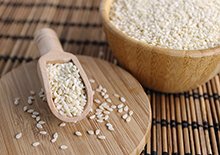
One of the unique things about sesame seeds is that they come from what is considered one of the oldest oilseed crops first domesticated by ancient Indus Valley civilizations. This is a region spanning modern-day Pakistan and Northern India. Most sesame seeds, also called "benne", originate from the main cultivar Sesamum indicum. Archaeological records reveal that this species was first cultivated on the Indian subcontinent more than 3000 years ago. The 3 basic types of raw bulk sesame seeds are white, brown and black. White sesame seeds are hulled and brown sesame seeds are unhulled.
Benefits of Horny Goat Weed
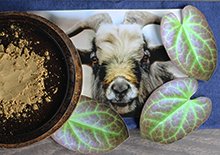
Horny goat weed is a perennial low-ground herbaceous plant that first got its reputation when domesticated goats were observed eating it. Hence the name, "horny goat" weed had an aphrodisiac-like influence along with increased copulation and fertility when consumed by these animals. This is evidently the ancient legend which comes from the mountainous regions of China where the "weed" naturally grows in abundance. It is thus a well-integrated herbal ally in traditional Chinese herbalism for this and a number of other reasons.
Foods High in Oxalates

Dietary oxalates are considered "antinutrients" found in many plant-based foods. Some of the highest known sources are in foods thought of as everyday superfoods like spinach, beets, almonds, sweet potato, chocolate, chia seed, quinoa, buckwheat, black tea, turmeric and black pepper. Oxalic acid, oxalate crystals and oxalate salts are often collectively referred to as oxalates. These are substances naturally found in plants during their growth cycle and essentially designed to protect against disease and/or predators.
Kava Kava Drink Benefits

Tired of hangovers, foggy mental states and roadblocks to achieving your life goals? More than ever before many young millennials and longevity enthusiasts are turning to healthier alternatives to consuming alcohol. Enter KAVA, also called kava kava, the herbal root that South Pacific Islanders from Melanesia, Polynesia and Micronesia have been using for centuries as a ceremonial elixir to encourage deeply relaxed states.
What are Collagen Peptides
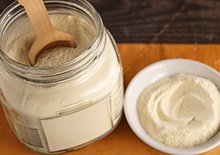
Collagen supplements are a thriving and rapidly growing market in today's health scene. Popularized by many famous celebrities for their beauty-enhancing influence, they are a convenient option to food-based sources like bone broth, By far, the most sought-after product found in supplemental powdered form is called collagen peptides. It is basically synonymous with the terms hydrolyzed collagen, collagen hydrolysate and collagen protein.
Things About Dragon Fruit

Most people want to know certain things about dragon fruit. First, what exactly is it? As the name implies it is a fruit variety, also called pitaya, that comes from an interesting night-blooming species in the cactus family. Growing on downward-flowing branched tips, the ripe juicy flesh gives it a hefty feel. An average fruit can weigh between half to one pound. Dragon fruit is believed to be native to Southern Mexico and regions of Central America but it grows well in many dry subtropical and tropical climates around the world. It is widely cultivated in regions of Vietnam, China, Thailand and Indonesia which are the top four leading producers in the global market.
Acid Reflux Home Remedies
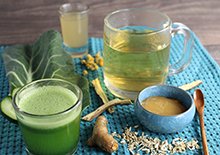
As you may know, if you're reading this acid reflux home remedies page, you most likely understand that this is a digestive disorder that causes stomach acid indigestion and often a burning sensation in the chest cavity. It's also called "heartburn" for this reason. This happens when the lower esophageal sphincter valve doesn't close properly allowing the regurgitation of gastric acid into the esophagus. This can be a temporary as well as chronic condition brought on by gastroesophageal reflux disease (GERD) or a hiatal hernia.
Benefits of Pine Pollen for Men
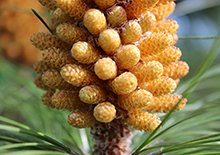
Pine pollen is a yellow powder produced from pine tree species. This is a seasonal occurrence in mid to late spring when male shoots or "catkins" become saturated with tiny pollen grains. Their release into the atmosphere often leaves a blanket of powdery dust which can completely cover the ground and everything around it. This is a nuisance to some people but in these ecosystems, it is a natural part of the life-growth cycles which feed the soil, plants and wildlife who eat pollen dusted food sources.
Xylitol Pros and Cons
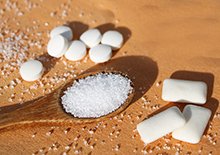
Xylitol (pronounced zy-li-tawl) is a lab-produced sweetener not exactly a natural unrefined one. It is a type of sugar alcohol that is synthesized from plant matter containing xylan, a hemicellulose polysaccharide that's hydrolyzed into xylose sugar. Xylose is then chemically converted into the crystalline sugar alternative we know as xylitol. This is the same process used to make other polyols and sugar substitutes such as erythritol, mannitol and sorbitol. To produce large quantities of bulk crystals xylitol is made from either corn cobs or birch tree bark.
5 Secret Uses of Ginger Root

Ginger root (Zingiber officinale) contains diverse bioactive compounds like gingerols, shogaols, paradols, zingerone and monoterpenes, depending on whether fresh or dried. Sometimes called vishwabhesaj or "universal medicine", these constituents are what give it a wide spectrum of health-enhancing benefits. Here are 5 lesser-known secret uses of ginger to add to this list. In addition, we'll give some traditional ways to take or prepare it for these more therapeutic purposes.
What are Chestnuts?

Chestnuts are the fruits or nuts from chestnut tree species that grow in many parts of the world. Here in the United States, we are familiar with the giant American chestnut (Castanea dentata), one of the tallest chestnut tree varieties. Other popular species include European chestnuts like the Spanish chestnut (Castanea sativa) also called "sweet chestnut". This is the one commonly sold unshelled in the commercial marketplace. This outer shell is technically known as a "peel". Underneath this layer is a thin slightly fuzzy skin that is removed to reveal the creamy pale yellow nut that must be heated to make it palatable to humans.
Sea Moss Benefits

Way back in 2016 when we first wrote about this seaweed, the sea moss that is so popular today was identified using the umbrella term "Irish moss" in many wellness-seeking communities. The name "sea moss" was rarely used. Nowadays, all types are generally referred to as "sea moss" and though they can come from different "red marine algae", their properties as thickening agents are quite similar due to either a high carrageenan or agar content. According to our research, the sea moss that has become especially trendy today comes from the genus Gracilaria, the golden beige variety.
Things About Celery Seeds
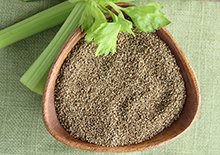
While celery seeds can come from the common celery cultivar, they actually are harvested as a seed spice from another Apium graveolens celery species known as smallage or wild celery. Celery seeds are in same family as other herbs and spices such as parsley, dill, fennel and cumin. When mature, the seed-like fruit develops, dries out and turns a tan to brown color. They somewhat resemble dill seeds in appearance. Being a very tiny seed, one pound may consist of seven hundred thousand to one million celery seeds.
MSM Supplement (Methylsulfonylmethane)

We created our first informational review on MSM over nine years ago, and it has recently become some of our top-viewed content. So, we thought we'd give an updated version, answering some common questions about this potentially valuable sulfur-based supplement. MSMis short for the very long word methylsulfonylmethane (methyl-sulfonyl-methane). Many of you may be familiar with the liquid solvent known as DMSO (dimethyl sulfone). White MSM chunks or powders are basically the water-soluble crystalline form of this compound.
Pea Protein Powder
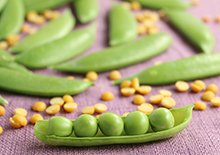
Pea protein as the name implies is a type of powder that is extracted from the Pisum sativum field pea species. Peas from the pod when mature are typically green but can also be a golden yellow color, depending on variety. When dried and dehulled they easily split in half, looking a little bit like a lentil. This creates split green peas or split yellow peas which are a common legume staple used for things like soups and stews. Pea protein powders are made from these dried split peas and, according to our research, most manufacturers use the dried yellow split peas, not the green ones.
Red Wine Vinegar Vs Balsamic

What are the differences between red wine vinegar and balsamic Red wine vinegar dates back to ancient Babylon and the beginnings of vinegar fermentation utilizing different fruits and grains. This vinegar variety is believed to have been further developed in Mediterranean regions by the Greeks and Romans who were masters of the winemaking process. Balsamic vinegar has deep roots in northern Italy, specifically the Modena and Reggio Emilia provinces in what is called the Emilia-Romagna region. This is where all authentic balsamic vinegar must come from.
What are Oyster Mushrooms?

Oyster mushroom is a type of medicinal fungi that grows naturally on deciduous trees all over the planet. Unlike other varieties, like shiitake or maitake, which have been grown for many centuries, the oyster is a fairly new cultivated favorite with many qualities to admire. Called "oyster" mushroom, not because they taste like oysters but because of the curved, sometimes wavy, oyster-like shape of the cap itself. They are quickly becoming one of the most commercially available mushroom staples next to the standard white button or other Agaricus bisporus species, like portobello and cremini.
What is Blue Spirulina?
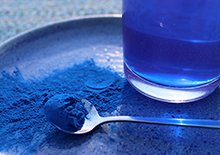
What is blue spirulina? Most of you up on the list of top superfoods may be familiar with the blue-green microalgae known as spirulina. Blue spirulina is extracted from this spirulina species, mostly the main one known as Arthrospira platensis. This process produces a powder with a brilliantly blue pigmentation because of its high PHYCOCYANIN content. Phycocyanin (also called C-Phycocyanin) is a water-soluble pigment-protein whose main function is to capture light energy. It serves as an accessory pigment to the green compound known as chlorophyll that's also abundant in spirulina.
Benefits of Coconut Oil
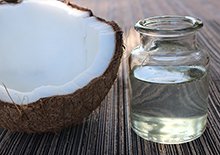
Coconut oil. is an edible oil sourced from the meat (or kernel) of mature coconuts from the coconut palm or Cocos nucifera species. The specific variety of dietary coconut oil we promote using is organic virgin coconut oil that is not refined, hydrogenated or fractionated. This is an unrefined oil that's usually either cold-pressed or expeller-pressed. Here is a list of the benefits of coconut oil you may wish to ponder if you're a current coconut oil user or contemplating adding it to your pantry of oil staples. How does it compare to MCT Oil? We'll discuss that as well.
12 Superfoods for the Eyes

This is our list of superfoods that support healthy eyesight. We'll start off with one of the most popular foods to add to a nutritional eye care routine, carrots and especially their concentrated juice. Carrots are one of the highest plant-based food sources of provitamin A known as BETA-CAROTENE, which converts to retinol or vitamin A in the body. It is the dominant pigment responsible for its bright orange color and beneficial for protecting one's vision. As aligned with the Doctrine of Signatures, carrot roots closely resemble the human eye when sliced.
Unique Ways to Use Black Seed
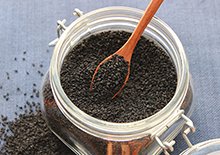
Black seeds, also known as black cumin, are a valued seed variety that have been consumed throughout human history for their nutraceutical properties. Their healing potentials, promoted by the Prophet Muhammad himself, have had great religious significance dating back to ancient Egypt. We have talked a lot about the highly prized black seed oil, a popular modern-day dietary supplement and its broad range of health benefits, but what about the tiny black seeds themselves?
9 Things About Collard Greens

Collard greens or "collards" are the large thick dark green leaves of the collard plant that are edible when raw or cooked as a green leafy vegetable. They are a common cultivar of Brassica oleracea species or Brassica family which includes cabbage, kale, broccoli and cauliflower. Interestingly, collard is simply a "non-heading" version of cabbage or a loose-leaved variety "without a head" or tightly packed core of leaves. In fact, the name "collard" is derived from the term "colewort", describing non-heading Brassica types.
What are Adzuki Beans?

Adzuki bean is a small glossy red bean from the species Vigna angularis, an annual vine native to East Asia. Pronounced 'a-zoo-kee', its name comes from the Japanese language. They are the main bean variety used to make the infamous "red bean paste", popular for use as a condiment or filling in sweet or savory foods. Although adzuki beans have been utilized alongside soybeans for centuries in East Asian cuisine, they are now becoming a more popular bean option in kitchens around the world.
Monk Fruit Sweetener Review
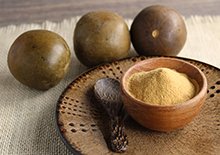
Monk fruit is an alternative sweetener made from the super sweet luo han guo species (Siraitia grosvenorii), native to parts of Southern China. According to Chinese legends, Buddhist monks in the remote mountainous regions near the city of Guilin were the first to discover and use it in the 13th Century. The name "luohan" comes from the term arhat, which means "a monk that becomes enlightened". The round vine-growing fruits are from the Gourd family with the word "guo" describing their fruit-like quality.
Top 10 List of Common Fruits

Probably one of the world's most popular fruit varieties, raw apples are sources of key nutrients. First, they are top on the list of common fruits that are high in PECTIN. One of the main reasons for the phrase "An apple a day keeps the doctor away"? Pectin is a type of polysaccharide and soluble fiber that normalizes bowel regularity and acts as a prebiotic, providing food for beneficial bacteria in the gut microbiome.
Dietary Plant-Based Lectins Explained
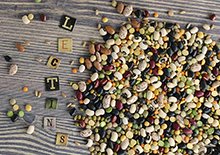
What are lectins? Lectins are types of proteins that bind to carbohydrates. The word LECTIN is derived from the Latin term 'LEGERE' which means "to select" as they are sticky and glue-like. There are literally hundreds of different lectins found in the botanical world. Their biological function in plants is to repel pests. In the human diet, lectins are most prevalent in plant-based foods. While "gluten" is one of the most well-known lectins, turns out there may be others we need to be wary of.
Reishi Mushroom Benefits
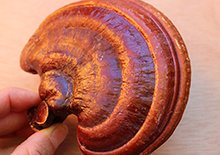
This dietary supplement is one that we here at Superfood Evolution both take regularly for its profound health-promoting influences. Not because of its long list of significant nutraceutical uses, but for other underlying benefits that it can offer to everyday life. What is this mysterious woody fungus? Displayed proudly on our header, it is one of our most beloved top superfoods in the world as well as on our website and YouTube channel. It is the reishi mushroom, also known as lingzhi or Ganoderma lucidum.
Pros and Cons of Oat Milk
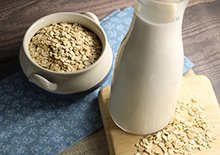
Manufactured oat milk is a plant-based drink known to have Swedish origins although health enthusiasts have been making it at home for many decades. The commercial variety is considered the innovation of food scientist Rickard Öste who in part produced one of the first oat milk brands in Sweden in the early 1990s. In the U.S., oat milk became the go-to dairy-free milk alternative between 2017-2019 and since then has only grown in popularity. Step aside soy milk and almond milk, oat milk is predicted to be top on the list of vegan plant milk options in 2024.
Ways to Remove Microplastics from the Body

Even though it is virtually impossible to escape all the microplastics currently present in our food, water and atmosphere, it is possible to do what we can to protect ourselves by facilitating the body's own detoxification processes. When it comes to ways to remove microplastics from the body, taking a multi-faceted approach is ever so important. So, in addition to maintaining a health-promoting diet and lifestyle choices, periodic use of certain super supplements can help to achieve this goal. Here are our top favorites to consider for assisting in their removal.
Continue reading "Ways to Remove Microplastics from the Body"
Top Green Tea Benefits

Green tea comes from a very remarkable yet humble-looking shrub, the Camellia, often used as a flowering ornamental landscape variety because it's easy to grow and maintain. This is the same thick hardy-leafed plant utilized to make black tea. Black tea, however, goes through an oxidation or "fermentation" process that green tea does not. Green tea leaves are immediately heated to stop oxidation which retains the dried leaf's green chlorophyll pigment as well as many health-enhancing nutrients that this type of tea is known for.
Benefits of Walnuts Vs Pecans

People often get walnuts and pecans confused because they look and taste somewhat similar. While they are in the same family Juglandaceae, they come from different genus and nut tree species. The common English walnut is known as Juglans regia and the popular pecan species is Carya illinoinens, a type of hickory. Both have thick outer husks surrounding the shell and nut. Walnuts have a golden light brown color and more ridges than pecans. Pecans, pronounced either 'PEE-Can' or 'PEE-Con', are smoother and flatter with vertical grooves and more of a red-brown color.
What is Polenta?
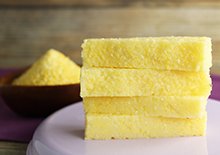
Generally speaking, polenta can be considered a type of cornmeal which technically means milled corn or maize. The common cornmeal that most people are familiar with is steel-milled which removes most of the husk and germ of the corn. Stone-ground cornmeal is like polenta as it retains more of the whole kernel. Cornmeal types tend to have a uniform texture and are better than polenta when used as a flour for baked goods like cornbread. Polenta meal is most always a medium coarse uneven texture, but cornmeal that's labeled "coarse ground" is often used interchangeably.
Bone Broth Benefits

Bone broth is a traditional food that dates back to prehistoric hunter-gatherers, hence why it’s often on a paleo diet protocol. Today, preparing it is still an age-old custom in many parts of the world. The current bone broth craze in the U.S. largely began many years ago in New York City by chef Marco Canora who ladled out this hearty brew from a takeout window. Now, people all over the planet have embraced it by the cupful for its many revitalizing health benefits, making it homemade or adding dehydrated bone broth protein powders to their morning rituals.
Benefits of Stinging Nettle
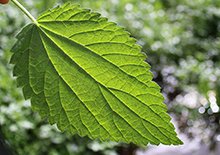
One of the great virtues of stinging nettle revered throughout the ages is its high concentration of nutrients. When nettle leaves are infused in hot water, they provide easily assimilated liquid nutrition. Dark olive-green nettle tea has a strong vegetal flavor because it's full of vitamins and minerals, especially iron, calcium, magnesium, phosphorus, potassium, vitamin C, vitamin K and some B vitamins. Tea infusions, using either fresh or dried leaves, are therefore potent vitamineral broths and great to have on hand for adding to soups or blended smoothies for extra sustenance.
What is Sumac Spice?

What is Sumac Spice? Sumac spice comes from the little reddish berries of the sumac bush that grow in dense clusters at the branch tips called bobs. The red berry fruit is fuzzy and sticky when ripe with a thin flesh surrounding one seed. After the whole berries are dried, they often turn a duller burgundy purple color and are ground to make the powdered spice called sumac. Sumac is known for its unusual tangy citrus-like flavor which comes primarily from its MALIC ACID content.
Trendy Cauliflower Recipes
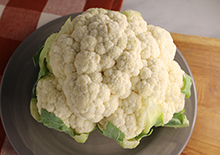
With plant-powered foods on the rise in the last decade, cauliflower's taste and texture have been used to transform some classic dishes into low-carb alternatives that are just as tasty. Today, many cauliflower recipes focus on this vegetable as the star of the show. That's because the cluster of florets that make up a cauliflower head are quite versatile lending themselves well to many appetizers or even as the main course. As a replacement for high-carb foods cauliflower hits the mark because of its milder taste and ability to take on flavor via any sauces and seasonings you put on it. Here are the top unusual yet creative ways to use this common cruciferous variety.